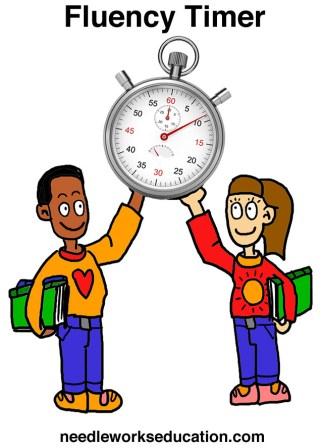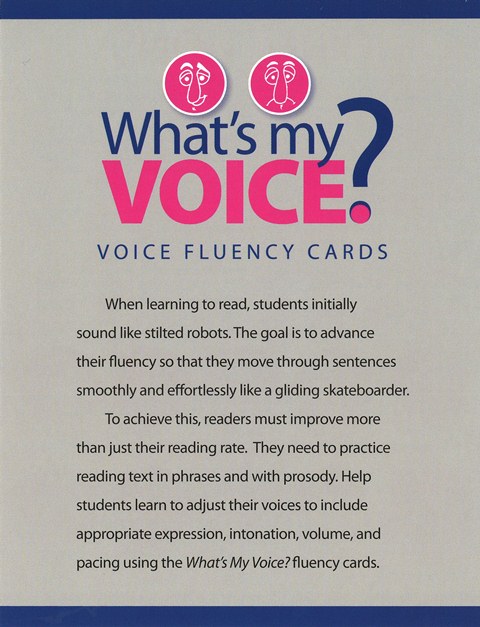Literacy Retreat 2012
SECRET SITE
Filling the Fluency Gap
Automaticy. During the Retreat, Courtney suggested that students time themselves as they read and comprehend.
For teachers with APP capabilities, have students use the Fluency Timer Pro app to time themselves as they read.
Spotlight on Speed. Many ideas were introduced to help students read with appropriate speed while still maintaining comprehension of what they are reading.
- In the Teacher Led suggestion #1, Courtney showed an excerpt of The Fluency Dance. If you would like to see more, view The Phonics Dance video.
- In Independent Practice #1, it was suggested that students participate in goal setting for themselves as they track their reading rate through repeated reading and cold readings. Use the following charts for students to keep track of their improvement (Repeated Reading 100 Chart, Repeated Reading 200 Chart). Also, an app was introduced to help students time themselves as they read so that they can track themselves. Tracking and goal-setting are motivational to students. Find more information about this app by visiting TimetoRead: The Reading Timer.
- In Independent Practice #3, it was suggested that students practice reading Fry’s Phrases playing “Beat the Computer” (First 100, Second 100, Third 100).
- Rather than making sliders, visit the Idea Library on the Smekens Education website and try Word-Maker Cups to target phonics.
The Importance of Prosody. Students need to read with personality! Intonation, mood, attitude, timing–they all play a part in helping the student comprehend the message in the text.
- Hearing Punctuation provides a sample list of “signals” for teachers to consider when making a list
of punctuation “signals” with their whole class. - What’s My Voice? is a card game for students to practice using and hearing voice in reading. This was a giveaway at the Retreat, but if you wish to purchase more for your class, or for a friend, they are available through The Literacy Store for $3.99 a set.
- Introducing Fluency to Students includes a sample fluency rubric with black and white icons to use to create customized fluency rubrics in the classroom.
- There is also an animated PowerPoint that you can use to explain this concept during a mini-lesson with your students. In addition to the PDF version, there is also a PowerPoint Fluency Rubric Template that you can alter for your grade level and expectations. And for those teachers who want to use their Smart Board technology–there is a SmartBoard Template as well!
- For teachers with APP capabilities, have students use the app D2U to record themselves reading. These recordings can be played back later, allowing students to self-assess using the fluency rubric that you created with the class.
Feel the Phrase. Teach your students to chunk their sentences into meaningful phrases instead of reading word-for-word, like a horse with blinders on.
- Courtney showed you a method called “chunking” which can also be called “scooping.” Use this Sentence Scooping PowerPoint to introduce this concept to your students. Included is a SmartBoard version! If you are looking for ways to use your Smartboard in the classroom, use this Smartboard version of the Sentence Scooping PowerPoint. Also, if you would like to create your own Sentence Scooping PowerPoint with text that you have chosen, then the next link is for you. Use this Sentence Scooping template page to create your own Sentence Scooping slides for a PowerPoint lesson.
- Have students overlap their reading AND math skills by having students graph how many words are in a sentence/passage versus how many chunks are in the same sentence/passage. Use this Word document called Fluency Factor to implement this idea, or access the SmartBoard version. Change the sentences as needed.
- Students decide whether a group of words is a full sentence or a fragment (phrase) with this easy handout. Use the Word document Full or Fragment to create your own group of words at whatever level you need. A SmartBoard version of this is also available.
Websites
kids.niehs.nih.gov/games/songs — Great songs to sing together to practice fluency through rhyme and phrasing.
www.robertmunsch.com — Listen to Robert Munsch read his own work.
www.readingresource.net — Free fluency activities with strategies for practicing phrasing.
www.poetry4kids.com — Great poems for kids to practice and perform.
www.aesopfables.com — Presents fables for teachers to make into Reader’s Theatre scripts.
www.aaronshep.com — Includes loads of free resources–even scripts for students to read.
References
Beers, K. (2003). When kids can’t read: What teacher’s can do. [S.l.]: Bt Bound.
Blau, L. (n.d.). 5 surefire strategies for developing reading fluency. Scholastic | Children’s Books and Book Club | Scholastic.com. Retrieved December 27, 2011, from http://www.scholastic.com/
Blevins, W. (2001). Teaching phonics & word study in the intermediate grades: A complete sourcebook. New York, NY: Scholastic Professional Books.
Cahill, M. A., & Gregory, A. E. (2011). Putting the fun back into fluency instruction. The Reading Teacher, 65(2), 127-131.
Ellery, V. (2005). Creating strategic readers: Techniques for developing competency in phonemic awareness, phonics, fluency, vocabulary, and comprehension. Newark, DE: International Reading Association.
Hasbrouck, J. (n.d.). Developing Fluent Readers. Reading Rockets. Retrieved December 28, 2011, from http://www.readingrockets.org/
Hasbrouck, J. (n.d.). Understanding and assessing fluency. Reading Rockets. Retrieved December 28, 2011, from http://www.readingrockets.org/
Marcell, B. (2011). Putting fluency on a fitness plan. The Reading Teacher, 65(4), 242-249. Retrieved January 5, 2011, from http://www.reading.org
Rasinski, T. V. (2010). The fluent reader in action. a close-up look into 15 diverse classrooms. New York, NY: Scholastic.
Rasinski, T. V. (2010). The fluent reader: Oral & silent reading strategies for building fluency, word recognition & comprehension. New York, NY: Scholastic.
Rasinski, T. V., & Griffith, L. (2011). Fluency through practice & performance. Huntington, CA: Shell Education.
Rasinski, T., Yildirim, K., & Nageldinger, J. (2011). Building fluency through the phrased text lesson. The Reading Teacher, 65(4), 252-255. Retrieved January 5, 2011, from http://www.reading.org
Richardson, J. (2009). The next step in guided reading: Focused assessments and targeted lessons for helping every student become a better reader. New York, NY: Scholastic.
Chapters 3 & 4
Thomas, M., Cerf, C., & Hart, C. (1998). Free to be … you and me. Philadelphia, PA: Running Press.



